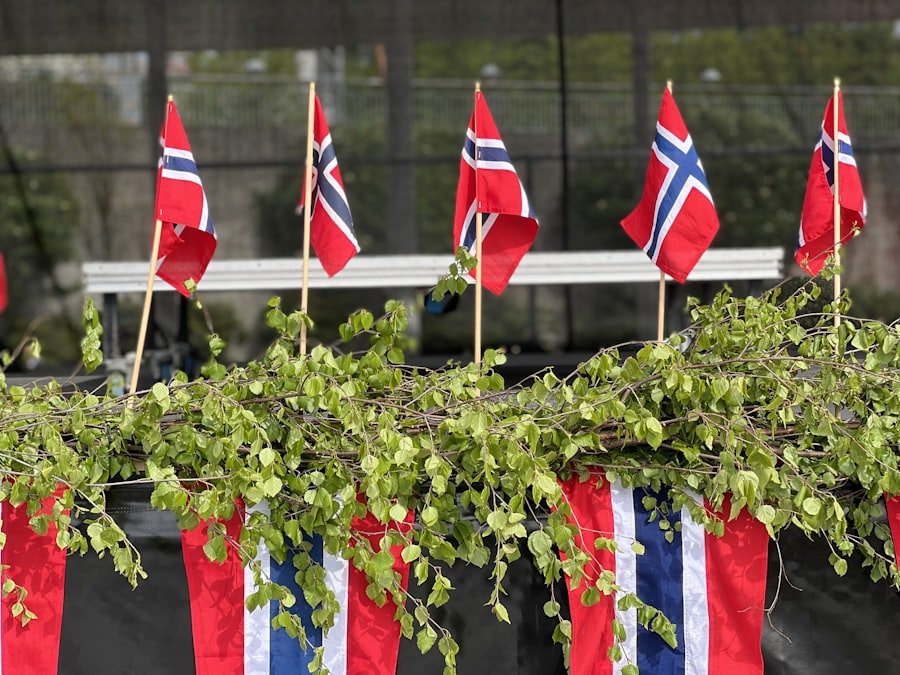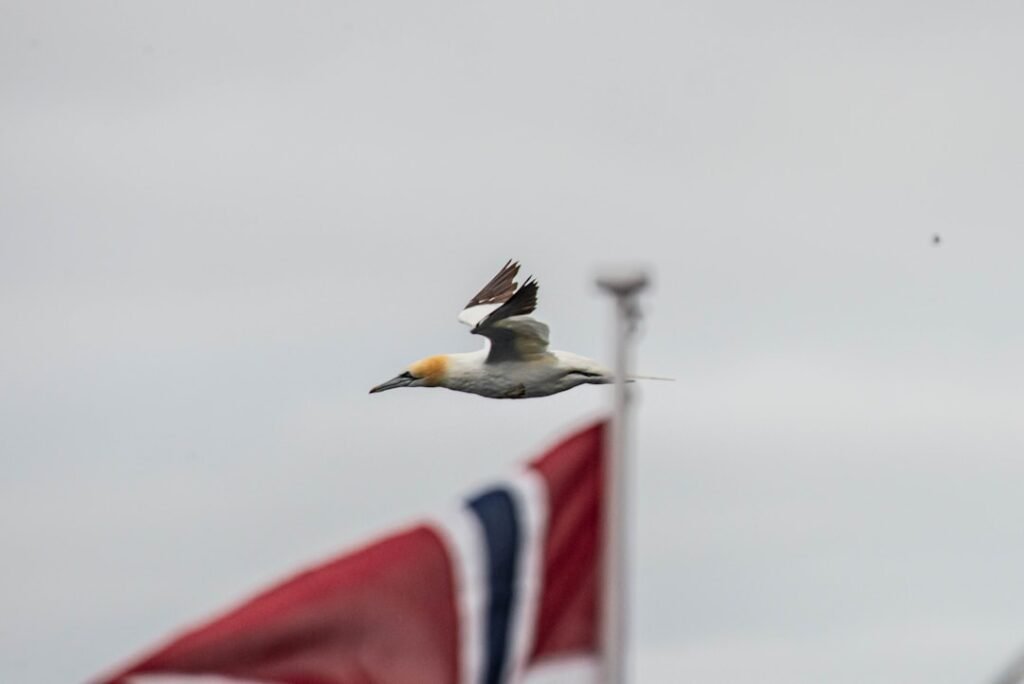Norwegian is a North Germanic language spoken by approximately 5 million people, primarily in Norway. It is closely related to Danish and Swedish, and together, they form the Scandinavian language group. Norwegian is known for its melodic and rhythmic sound, making it a beautiful language to listen to and speak. Learning about the Norwegian language is important for several reasons. Firstly, it allows individuals to communicate with the Norwegian people and understand their culture better. Secondly, it opens up opportunities for travel, work, and study in Norway. Lastly, it provides a gateway to understanding other Scandinavian languages and their similarities.
The Origin of Norwegian: Ancient Germanic Language Family
The Norwegian language has its roots in the ancient Germanic language family. It can be traced back to Old Norse, which was spoken by the Vikings during the Viking Age (800-1050 AD). Old Norse was a North Germanic language that was spoken in Scandinavia, Iceland, and the Faroe Islands. It was a highly inflected language with complex grammar and a rich vocabulary.
Over time, Old Norse evolved into different dialects, which eventually gave rise to the modern Scandinavian languages. The separation of these languages was mainly due to geographical isolation and political developments. However, despite their differences, Norwegian, Danish, and Swedish still share many similarities in terms of vocabulary and grammar.
Language Evolution: From Old Norse to Modern Norwegian
The Norwegian language has undergone significant changes over time. One of the major changes occurred during the Middle Ages when Norway came under Danish rule. This led to the influence of Danish on the Norwegian language, particularly in terms of vocabulary and grammar. As a result, Norwegian became more similar to Danish during this period.
In the 19th century, there was a movement to standardize the Norwegian language and differentiate it from Danish. This led to the development of two written forms of Norwegian: Bokmål and Nynorsk. Bokmål is based on Danish-influenced Norwegian, while Nynorsk is based on the dialects spoken in rural areas of Norway. Both forms are recognized as official written languages in Norway.
Norwegian Dialects: Differences between East, West, and Central Norwegian
Norwegian is known for its rich variety of dialects, with significant differences in vocabulary, pronunciation, and grammar. The three main dialect groups are East Norwegian, West Norwegian, and Central Norwegian.
East Norwegian is spoken in the eastern part of Norway, including Oslo, the capital city. It is considered the standard dialect and is closest to the written form of Norwegian (Bokmål). East Norwegian has a more neutral pronunciation compared to other dialects.
West Norwegian is spoken in the western part of Norway, including Bergen and Stavanger. It is characterized by a distinct intonation pattern and a rolling “r” sound. West Norwegian has a strong influence on Nynorsk, the written form of Norwegian based on rural dialects.
Central Norwegian is spoken in the central part of Norway, including Trondheim. It is considered a transitional dialect between East and West Norwegian. Central Norwegian has some unique features, such as the pronunciation of certain vowels.
Norwegian Grammar: Nouns, Verbs, Adjectives, Adverbs, etc.
Norwegian grammar follows a similar structure to other Germanic languages. It is characterized by its use of gendered nouns, verb conjugation, and word order.
Nouns in Norwegian are either masculine, feminine, or neuter. They are inflected for case and number. The definite article “the” is also inflected to agree with the gender and number of the noun.
Verbs in Norwegian are conjugated based on tense, mood, and person. There are three verb classes: weak verbs, strong verbs, and irregular verbs. Weak verbs follow a regular pattern of conjugation, while strong verbs have irregular conjugations.
Adjectives in Norwegian agree with the gender and number of the noun they modify. They can also be inflected for comparative and superlative forms.
Adverbs in Norwegian are used to modify verbs, adjectives, and other adverbs. They are usually formed by adding the suffix “-t” or “-tt” to the adjective form.
Norwegian Spelling and Pronunciation: Special Letters and Rules

The Norwegian alphabet consists of 29 letters, including three additional letters: æ, ø, and å. These letters have unique sounds and are essential for proper pronunciation in Norwegian.
The letter “æ” is pronounced like the “a” in “cat.” The letter “ø” is pronounced like the “u” in “hurt.” The letter “å” is pronounced like the “o” in “hot.”
Norwegian pronunciation can be challenging for non-native speakers due to its melodic and rhythmic nature. The intonation pattern plays a crucial role in conveying meaning and emphasis in Norwegian. Additionally, there are several vowel sounds that may be unfamiliar to non-native speakers.
The Status of Norwegian: Official Language and Minority Languages
Norwegian is the official language of Norway and is widely spoken throughout the country. It is also recognized as a minority language in Sweden, Finland, and Denmark due to historical ties between these countries.
In addition to Norwegian, there are several minority languages spoken in Norway. These include Sami, Kven, Romani, and Finnish. The Norwegian government has taken steps to protect and promote these minority languages through education and cultural initiatives.
The Use of Norwegian: Usage in Norway and Other Countries
Norwegian is the primary language used for communication in Norway. It is used in all aspects of daily life, including education, government, media, and business. However, English is also widely spoken and understood, especially in urban areas and among younger generations.
Outside of Norway, Norwegian is primarily spoken by Norwegian expatriates and descendants of Norwegian immigrants. It is also taught as a foreign language in some countries, particularly in neighboring Scandinavian countries.
Norwegian Education: Teaching in Schools and Universities
Norwegian is a compulsory subject in Norwegian schools, and it is taught from an early age. Students learn both Bokmål and Nynorsk, as well as the dialects spoken in their local region. In addition to language classes, there are also courses on Norwegian literature and culture.
At the university level, Norwegian language courses are offered to international students who wish to study in Norway. These courses provide a foundation in the language and help students integrate into Norwegian society.
Norwegian Literature: Representative Works and Authors
Norwegian literature has a rich history dating back to the Viking Age. Some of the most famous works of Norwegian literature include “Peer Gynt” by Henrik Ibsen, “Hunger” by Knut Hamsun, and “Kristin Lavransdatter” by Sigrid Undset. These works have been translated into numerous languages and have gained international recognition.
Norwegian authors continue to produce notable works in various genres, including fiction, poetry, and non-fiction. Some contemporary Norwegian authors include Karl Ove Knausgård, Jo Nesbø, and Vigdis Hjorth.
The Future of Norwegian: Challenges and Prospects
The Norwegian language faces several challenges in the modern world. One of the main challenges is the influence of English and globalization. English has become the dominant language in many fields, including business, technology, and academia. This has led to an increased use of English words and phrases in the Norwegian language.
Another challenge is the preservation of dialects and minority languages within Norway. As urbanization increases and younger generations move away from rural areas, there is a risk of losing these unique linguistic traditions.
Despite these challenges, there are also opportunities for the Norwegian language. The popularity of Scandinavian culture, including TV shows, music, and literature, has increased worldwide. This has sparked an interest in learning Norwegian and experiencing the language and culture firsthand.
In conclusion, learning about the Norwegian language is essential for understanding the culture and people of Norway. It provides opportunities for travel, work, and study in Norway, as well as a gateway to other Scandinavian languages. The Norwegian language has a rich history and has evolved over time due to various influences. It is characterized by its dialectal variations, grammar rules, and unique pronunciation. While Norwegian faces challenges in the modern world, there are also prospects for its preservation and promotion.
在挪威,官方语言是挪威语。如果你对挪威语感兴趣,可以阅读这篇相关文章:挪威语科技和创新词汇。这篇文章介绍了挪威语中与科技和创新相关的前沿技术术语。无论是对于学习挪威语还是对于科技行业的从业者来说,这些词汇都非常有用。
FAQs
挪威的官方语言是什么?
挪威的官方语言是挪威语。
挪威语是哪个语系的语言?
挪威语属于日耳曼语族北日耳曼语支。
挪威有其他官方语言吗?
挪威有两种官方语言,分别是挪威语和萨米语。
挪威语在哪些国家被使用?
挪威语是挪威的官方语言,也在瑞典、芬兰和俄罗斯的一些地区被使用。
挪威语的语法和发音难度如何?
挪威语的语法相对简单,但发音较为复杂,需要一定的练习。
挪威语的文字是什么?
挪威语使用拉丁字母,加上一些特殊符号,如æ、ø、å。

